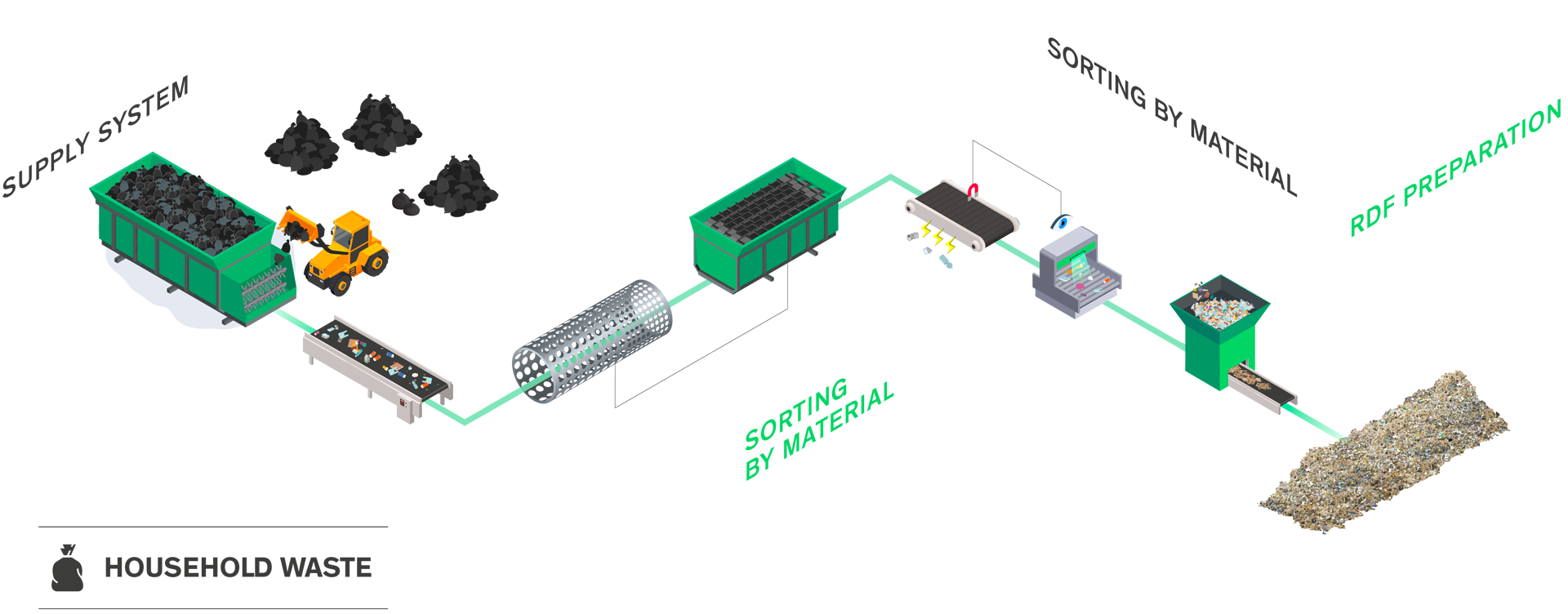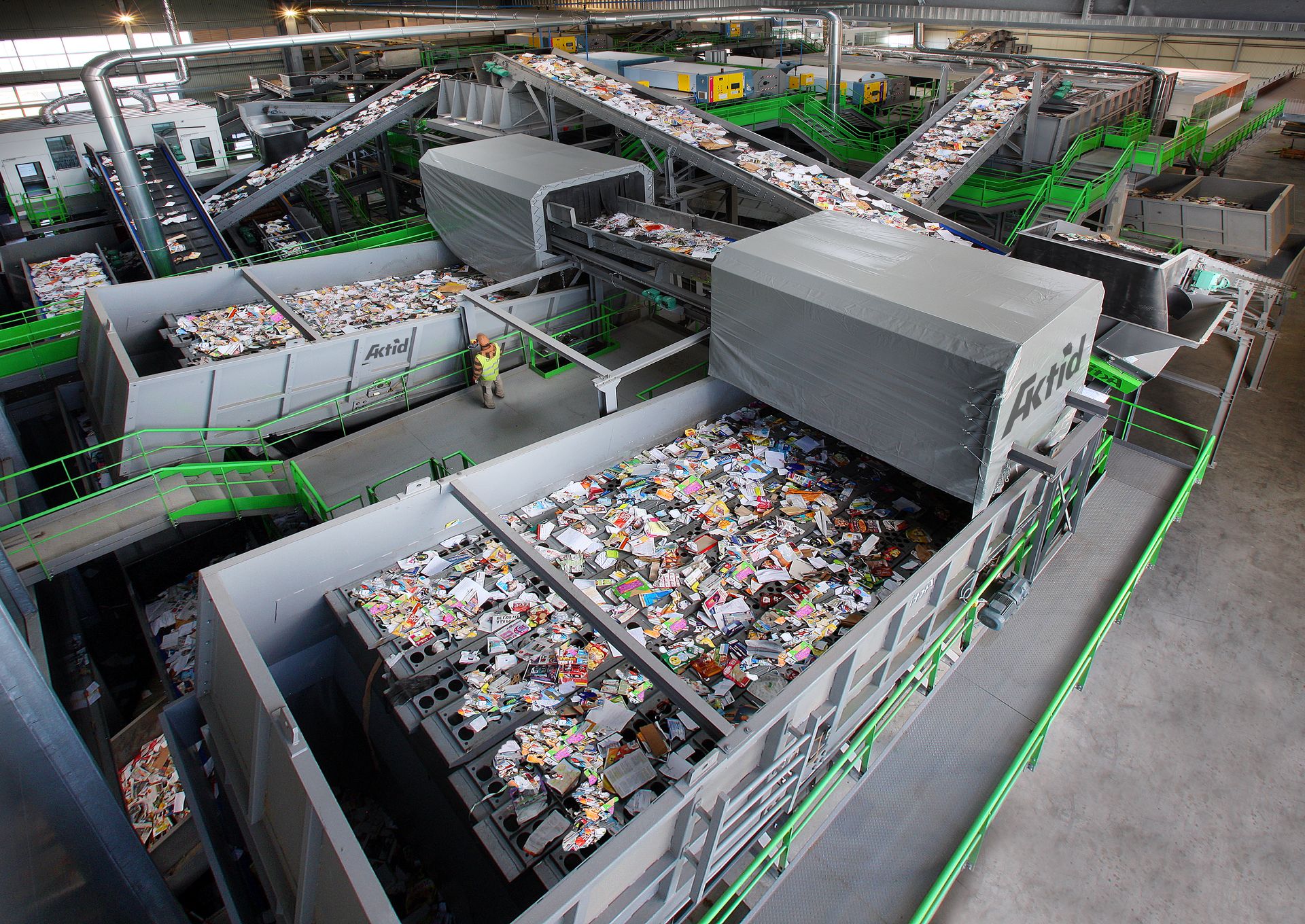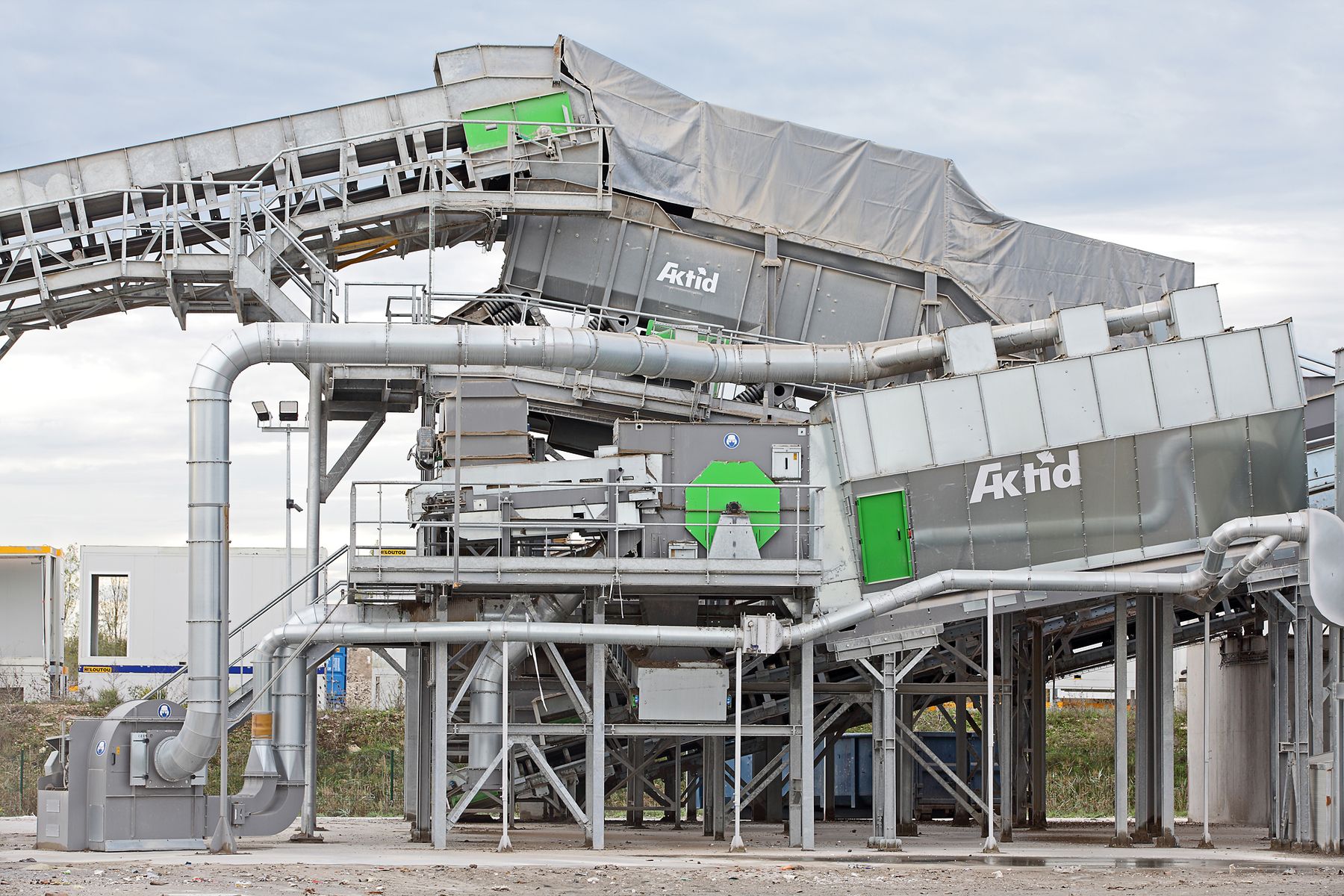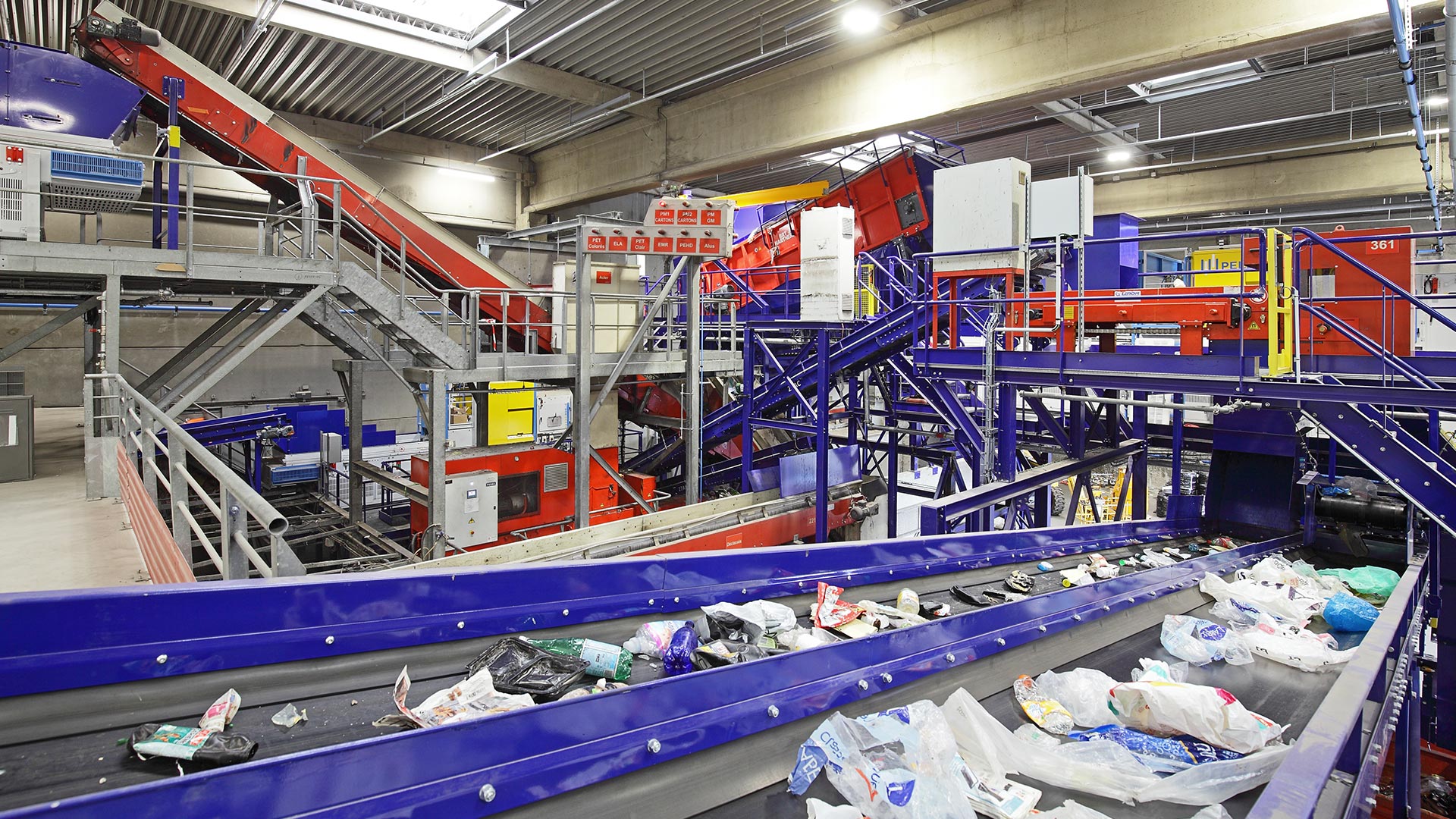Municipal Solid Waste (MSW) is a resource

Municipal Solid Waste (MSW) is the everyday waste that could not be sorted into the various selective sorting bins (yellow bin, glass, compost), such as food scraps, personal hygiene and cleaning products, and small plastic objects. MSW also includes waste that has not been properly sorted, such as fermentable or organic waste (food waste, grass cuttings, wood, etc.) and recyclable household packaging.
Today, most of this type of Municipal Solid Waste (MSW) deposited in grey bins is buried or incinerated. The gradual reduction in capacity and the rising cost of burying waste makes this method of waste processing unviable in the long term.
Residual Municipal Solid Waste (MSW) sorting centres can extract recoverable waste such as certain plastics and metals. The remaining non-hazardous dry waste is processed into solid recovered fuel (SRF). This SRF is a local energy source and an efficient alternative to the use of fossil fuels in cement works or industrial heating plants, and sometimes even in district heating networks.
The main stages
in sorting household waste
Recoverable materials such as plastics and metals are extracted from the dry waste for recycling. Ferrous and non-ferrous metals are separated out, respectively by large magnets known as overbands and eddy current separators. Plastics are separated out by optical sorting machines.
Minimising final waste
This process recycles or reuses household waste wherever possible by recycling the materials, recovering the energy and stabilising the organic waste before burying it in the ground. This substantially reduces the volume of waste for burial (or incineration).
By reusing the waste produced by citizens and turning it into a new energy source, this solution is part of a circular economy model and reduces primary resource usage.
An AKTID Municipal Solid Waste (MSW) -sorting facility is :
AKTID facilities
Close-up on: ballistic separators
Ballistic separators perform the “core process” in next-generation waste-sorting centres. They are used to separate a stream of mixed materials into three or four categories, based on the principle that, depending on their physical properties, materials react differently when they are moving.
The ballistic separator designed by AKTID delivers an excellent quality of separation and processes an additional 30% of throughput by leveraging :








Stay In Touch